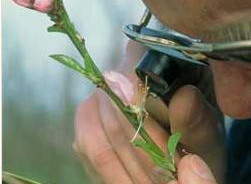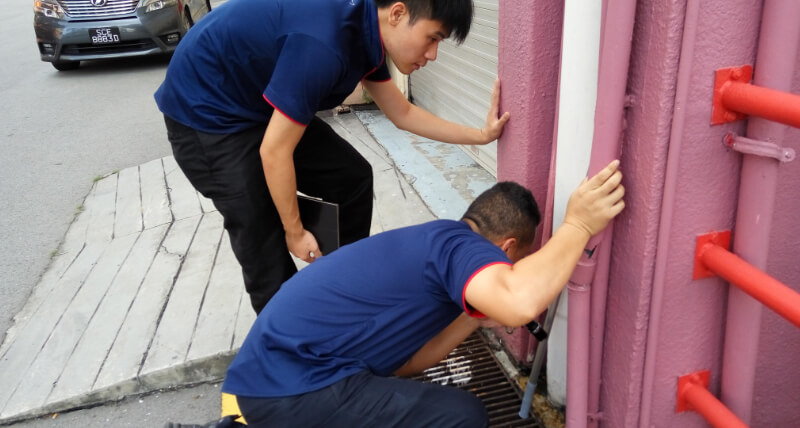
HACCP and Food Safety in the Restaurant
April 8, 2015
Don’t Let The Bed Bugs Bite Your Family!
April 10, 2015Ikari’s Service Specialists are highly skilled with specialized Integrated Pest Management (IPM) Knowledge that results in effective, low-toxic and environmentally responsible methods to eliminate pests. How to choose the right pest control company? Read here for more info.
What is Integrated Pest Management (IPM)?
(Source: http://www.ipm.ucdavis.edu/GENERAL/whatisipm.html)
Integrated pest management, or IPM, is a process you can use to solve pest problems while minimizing risks to people and the environment. IPM can be used to manage all kinds of pests anywhere—in urban, agricultural, and wildland or natural areas.
Technical Definition of IPM
Integrated pest management (IPM) is an ecosystem-based strategy that focuses on long-term prevention of pests or their damage through a combination of techniques such as biological control, habitat manipulation, modification of cultural practices, and use of resistant varieties. Pesticides are used only after monitoring indicates they are needed according to established guidelines, and treatments are made with the goal of removing only the target organism. Pest control materials are selected and applied in a manner that minimizes risks to human health, beneficial and nontarget organisms, and the environment.
How does IPM work?
IPM is based on scientific research
IPM focuses on long-term prevention of pests or their damage by managing the ecosystem
With IPM, you take actions to keep pests from becoming a problem, such as by growing a healthy crop that can withstand pest attacks, using disease-resistant plants, or caulking cracks to keep insects or rodents from entering a building.
Rather than simply eliminating the pests you see right now, using IPM means you’ll look at environmental factors that affect the pest and its ability to thrive. Armed with this information, you can create conditions that are unfavorable for the pest.
In IPM, monitoring and correct pest identification help you decide whether management is needed
Monitoring means checking your field, landscape, forest, or building—or other site—to identify which pests are present, how many there are, or what damage they’ve caused. Correctly identifying the pest is key to knowing whether a pest is likely to become a problem and determining the best management strategy.
After monitoring and considering information about the pest, its biology, and environmental factors, you can decide whether the pest can be tolerated or whether it is a problem that warrants control. If control is needed, this information also helps you select the most effective management methods and the best time to use them.
IPM programs combine management approaches for greater effectiveness
The most effective, long-term way to manage pests is by using a combination of methods that work better together than separately. Approaches for managing pests are often grouped in the following categories.
- Biological control
Biological control is the use of natural enemies—predators, parasites, pathogens, and competitors—to control pests and their damage. Invertebrates, plant pathogens, nematodes, weeds, and vertebrates have many natural enemies.
- Cultural controls
Cultural controls are practices that reduce pest establishment, reproduction, dispersal, and survival. For example, changing irrigation practices can reduce pest problems, since too much water can increase root disease and weeds.
- Mechanical and physical controls
Mechanical and physical controls kill a pest directly or make the environment unsuitable for it. Traps for rodents are examples of mechanical control. Physical controls include mulches for weed management, steam sterilization of the soil for disease management, or barriers such as screens to keep birds or insects out.
- Chemical control
Chemical control is the use of pesticides. In IPM, pesticides are used only when needed and in combination with other approaches for more effective, long-term control. Also, pesticides are selected and applied in a way that minimizes their possible harm to people and the environment. With IPM you’ll use the most selective pesticide that will do the job and be the safest for other organisms and for air, soil, and water quality; use pesticides in bait stations rather than sprays; or spot-spray a few weeds instead of an entire area.
IPM programs
These IPM principles and practices are combined to create IPM programs. While each situation is different, five major components are common to all IPM programs:
- Pest identification
- Monitoring and assessing pest numbers and damage
- Guidelines for when management action is needed
- Preventing pest problems
- Using a combination of biological, cultural, physical/mechanical and chemical management tools
To learn more about IPM, please contact IKARI at +(65) 67431313.




